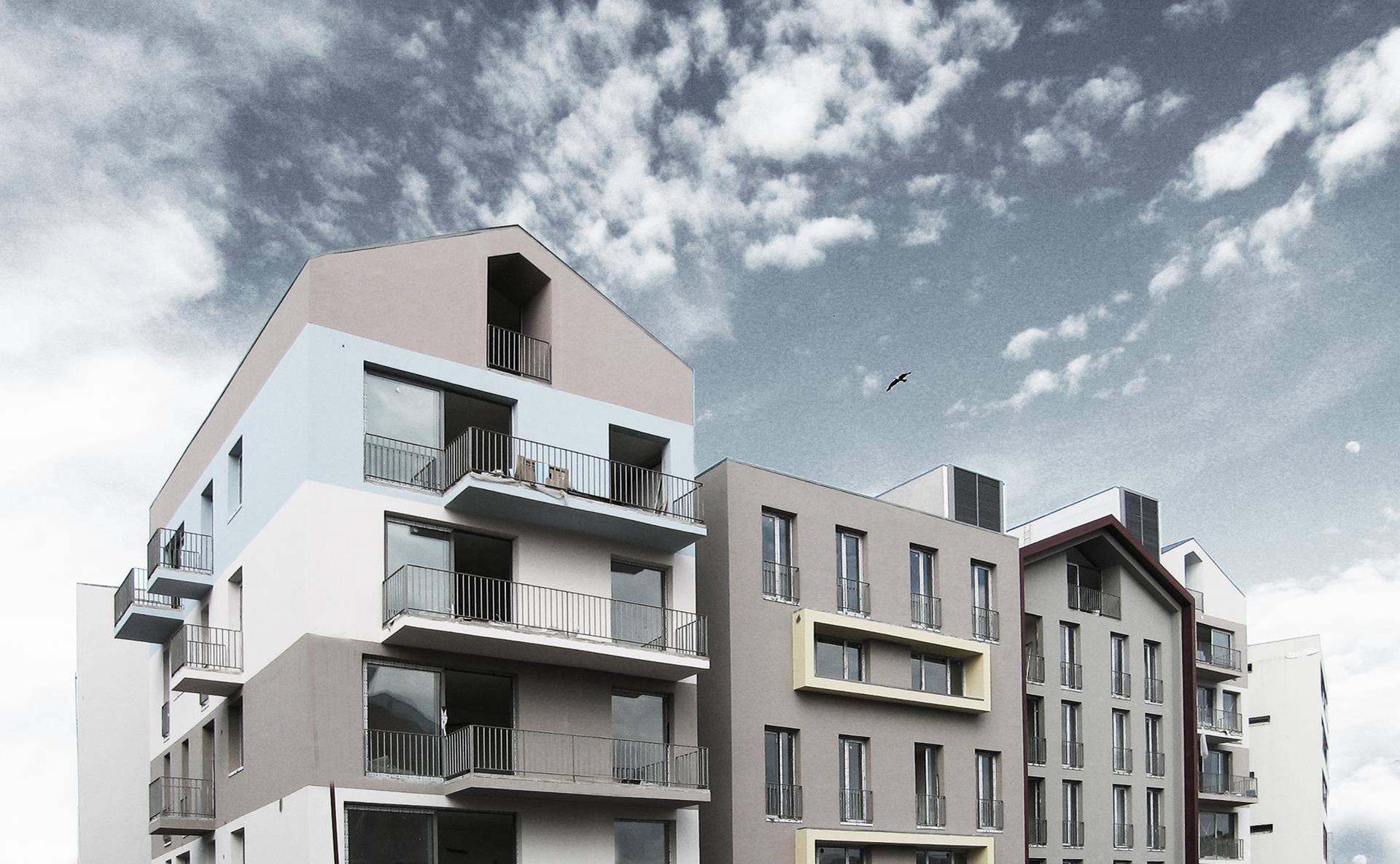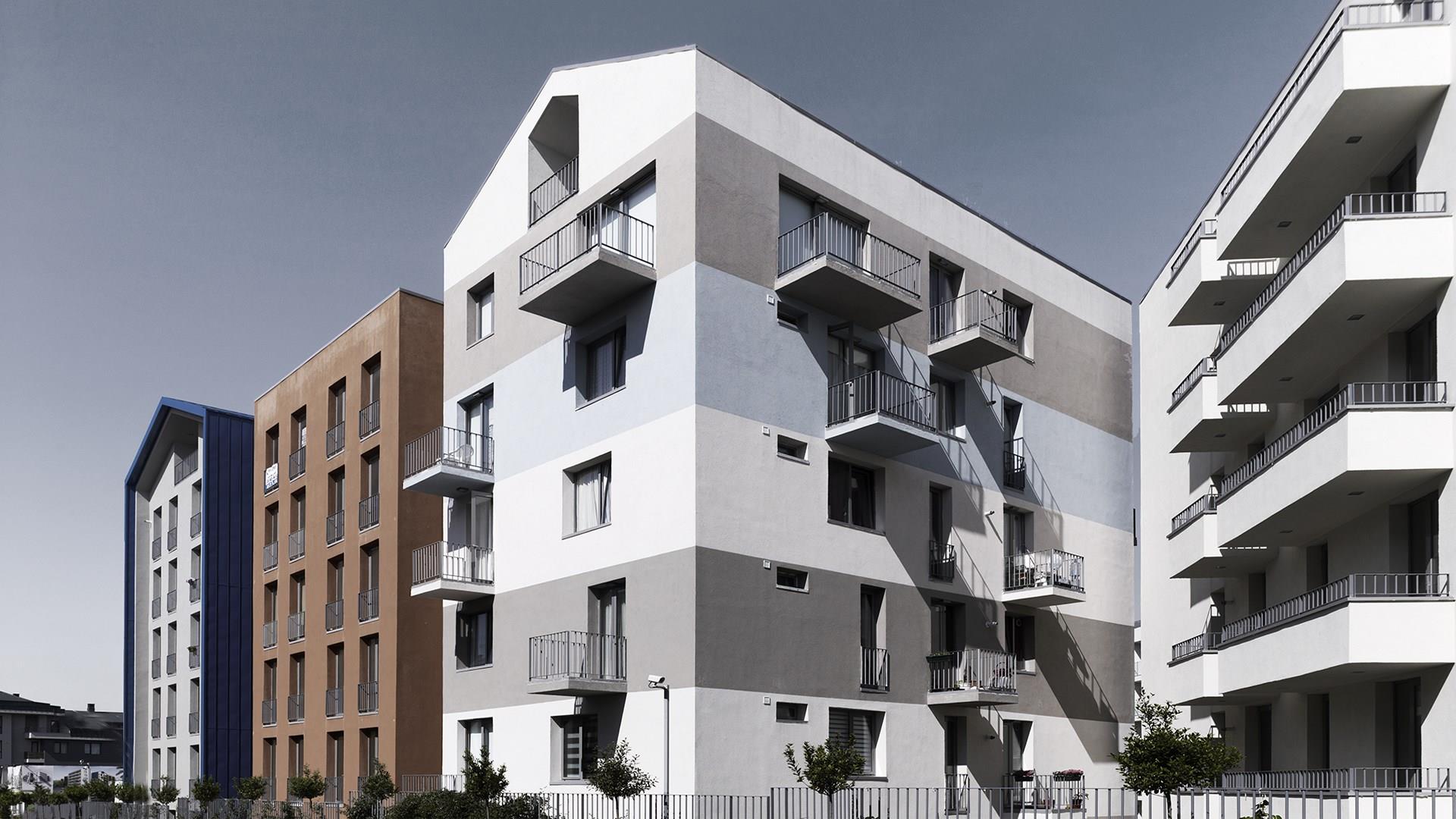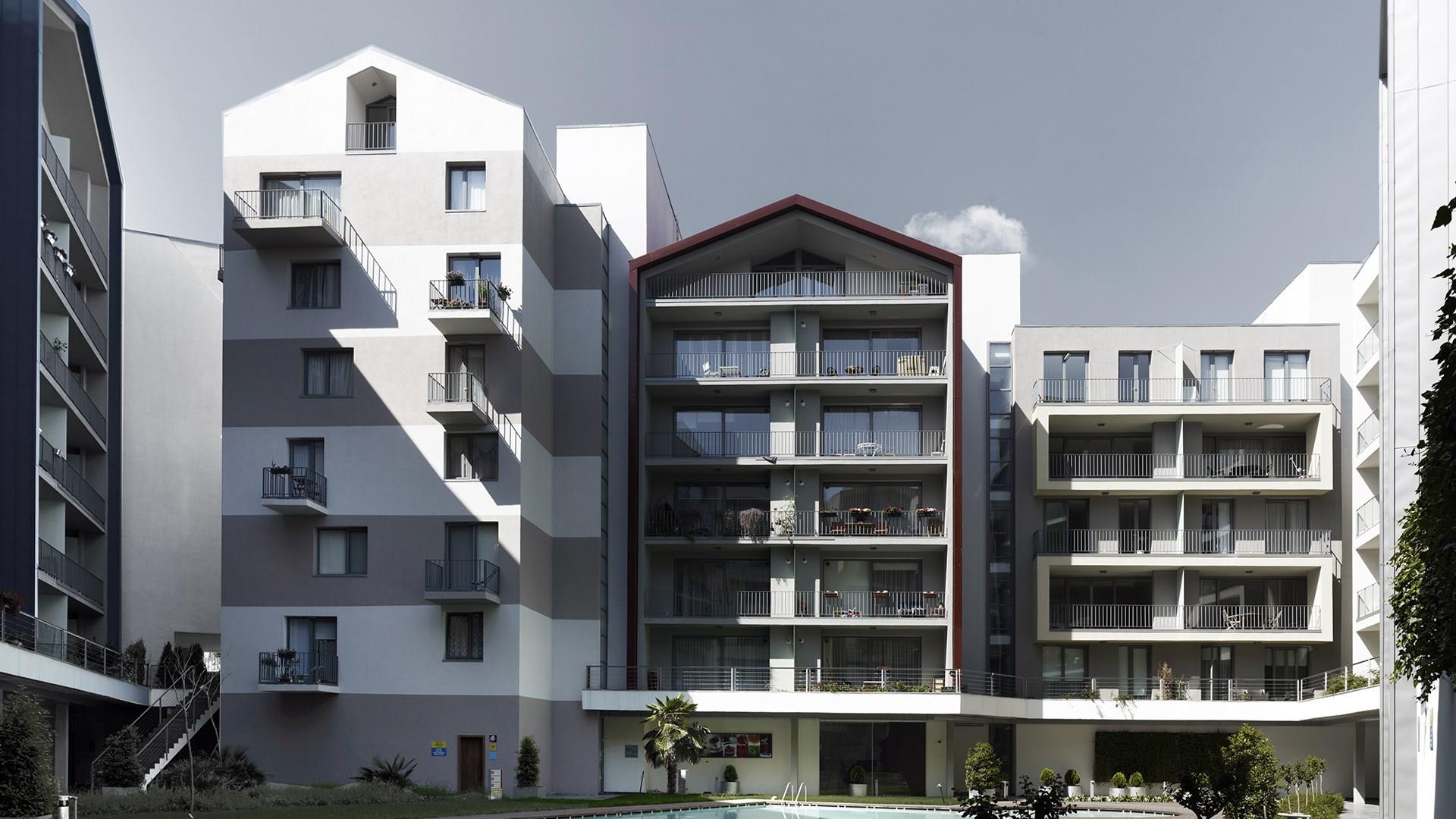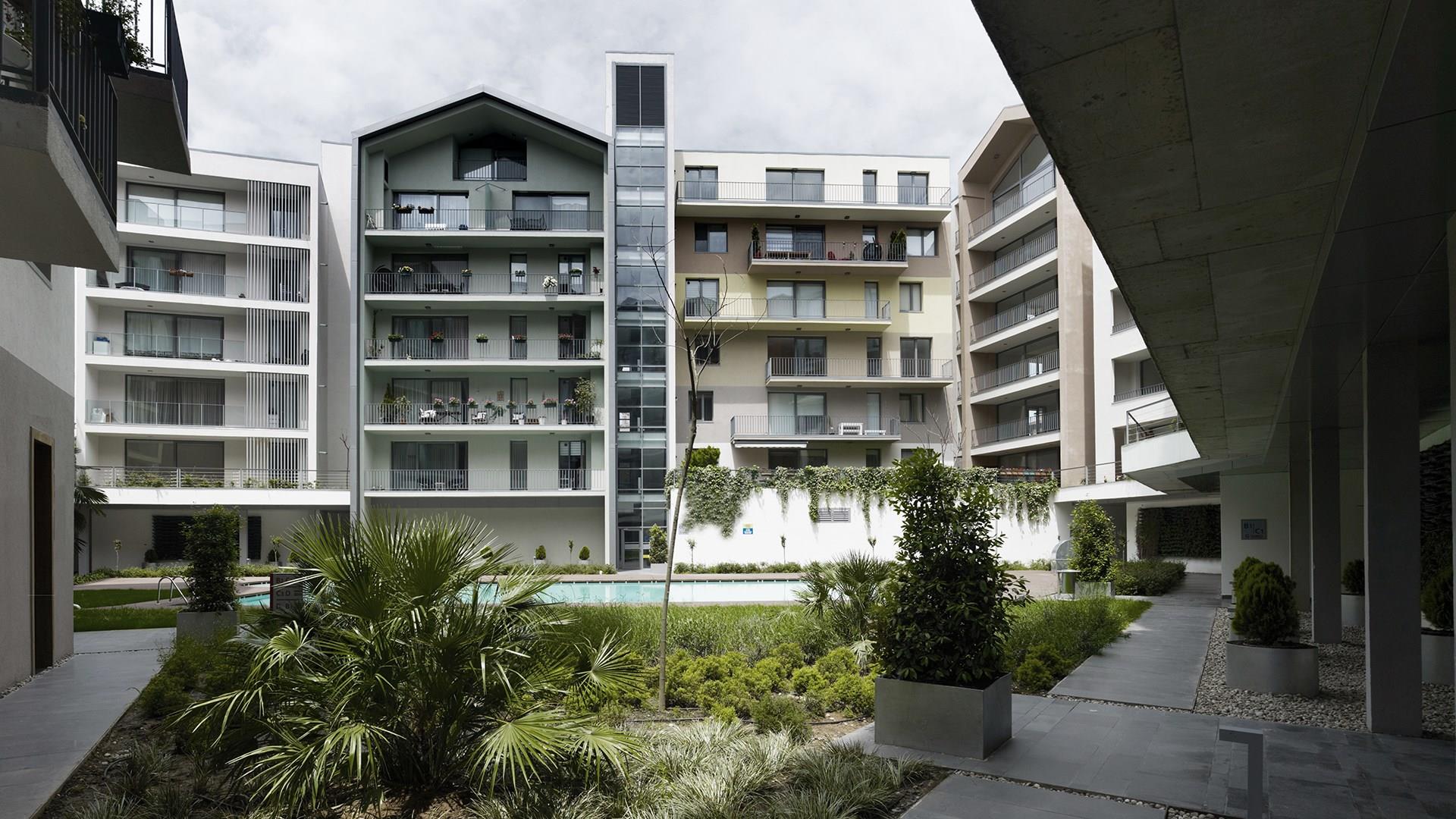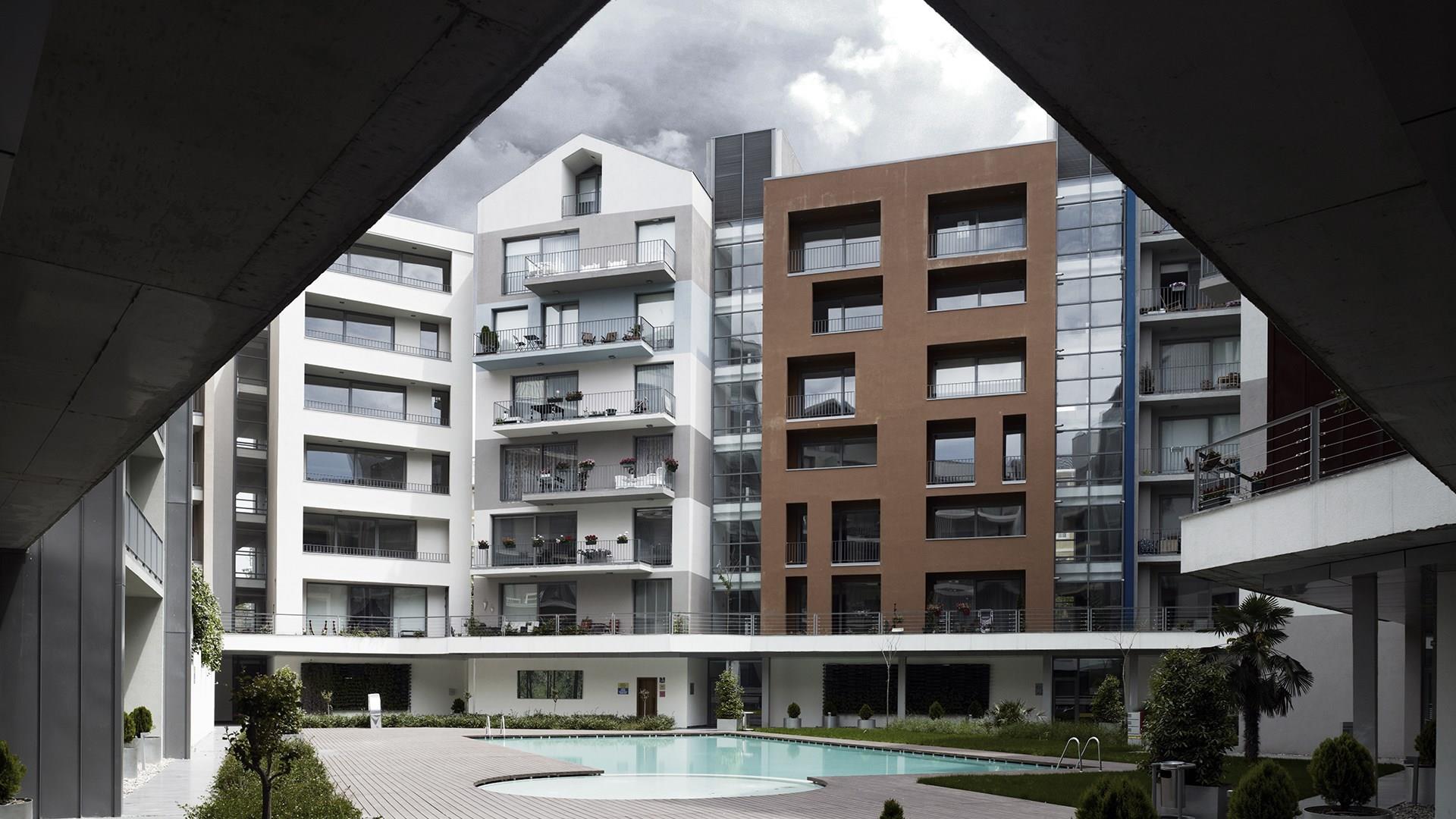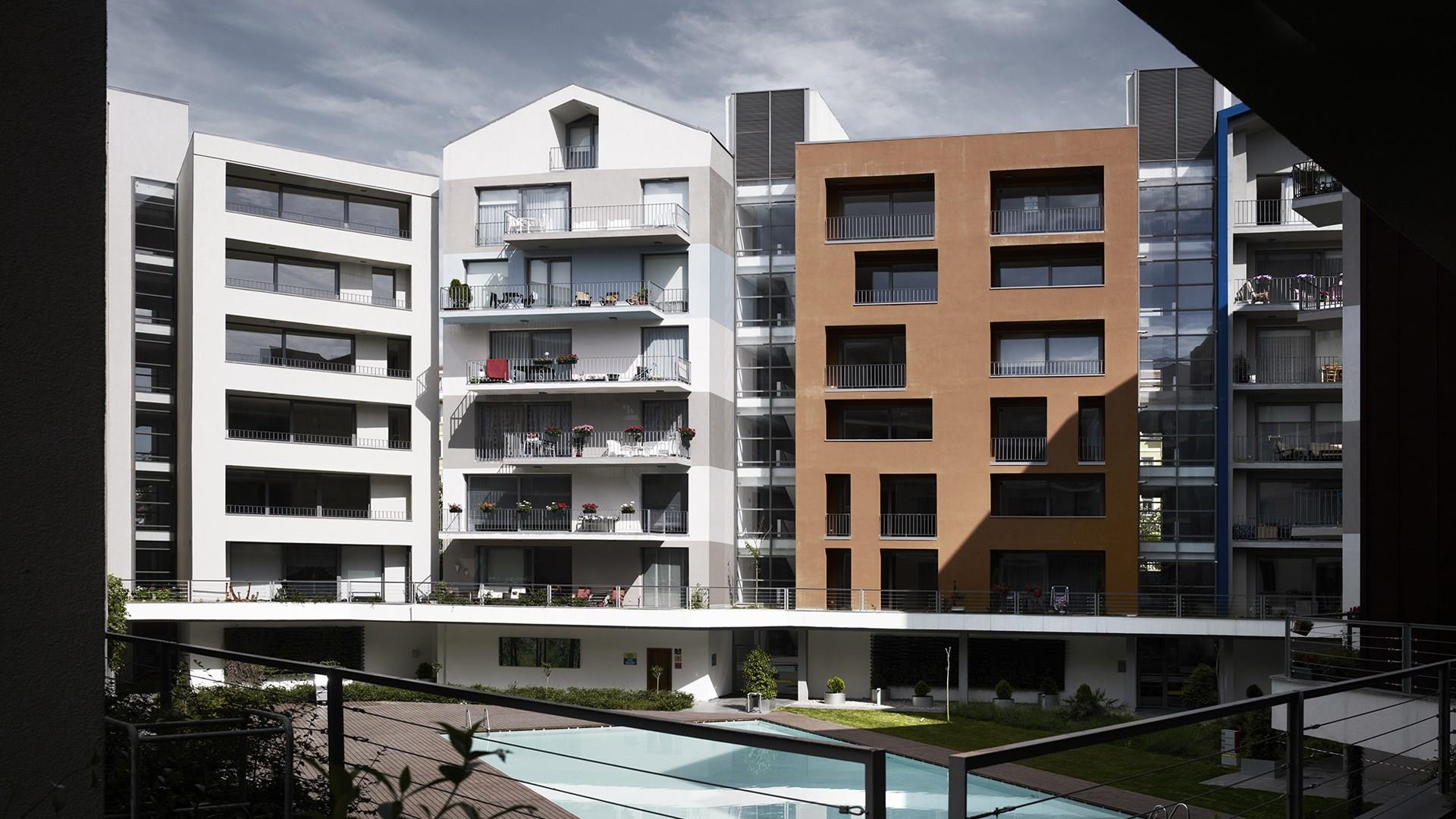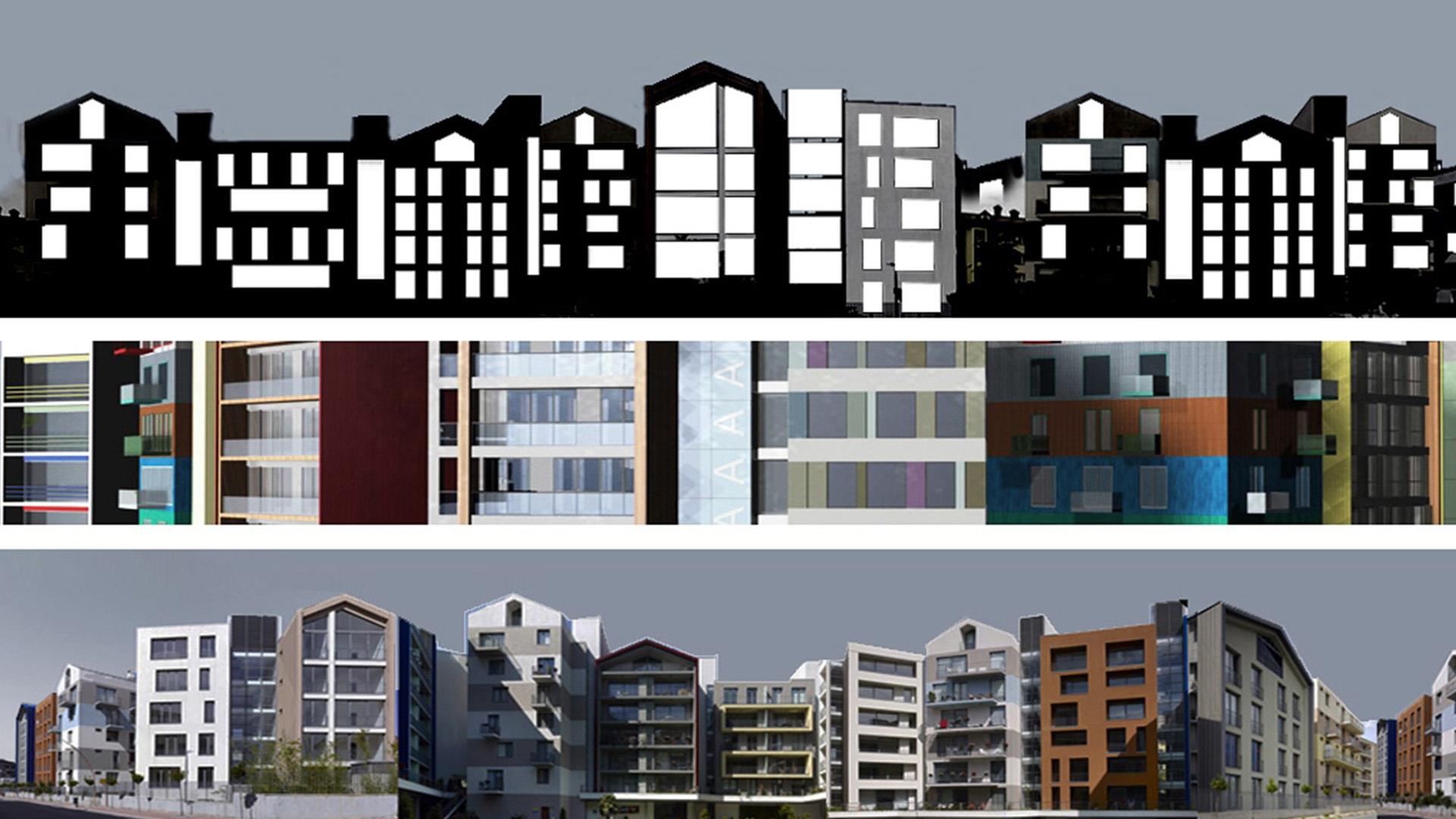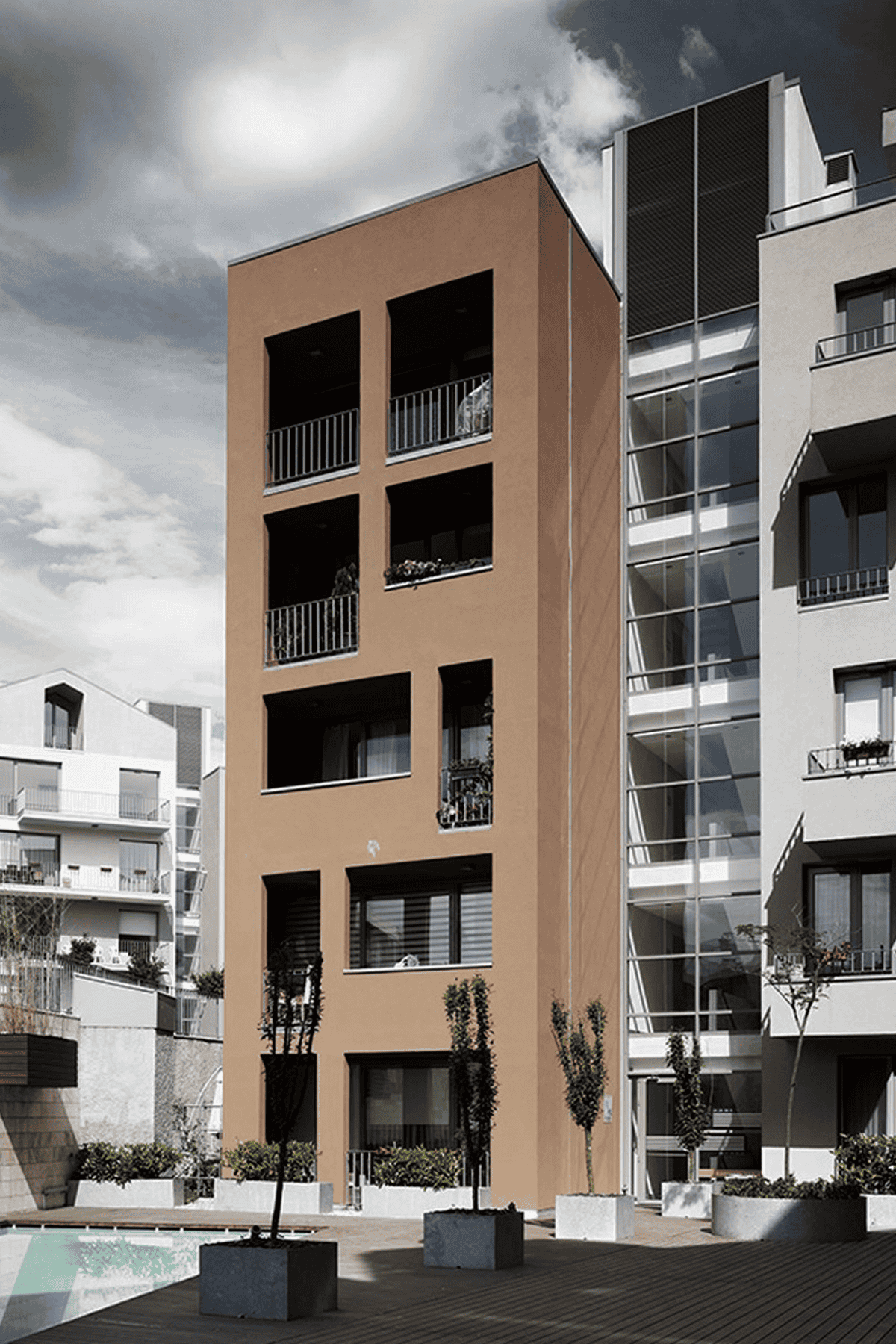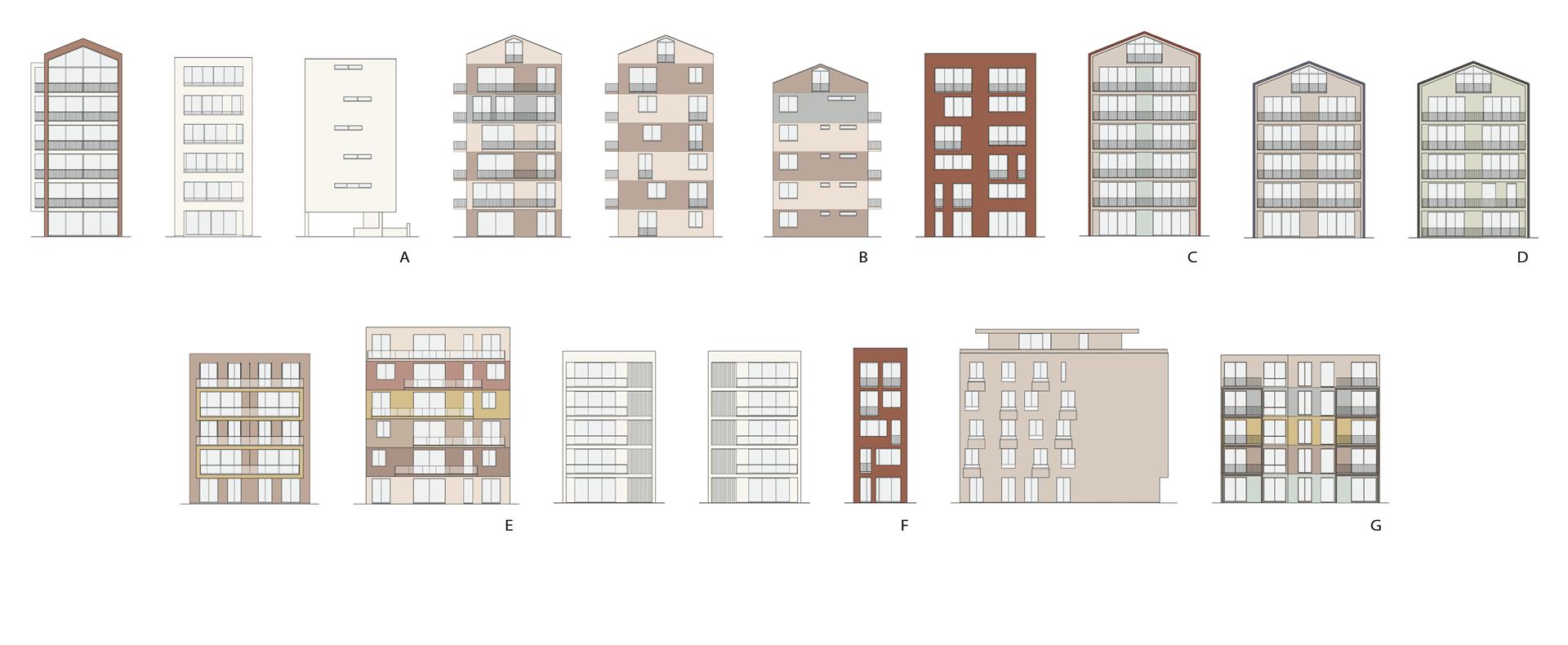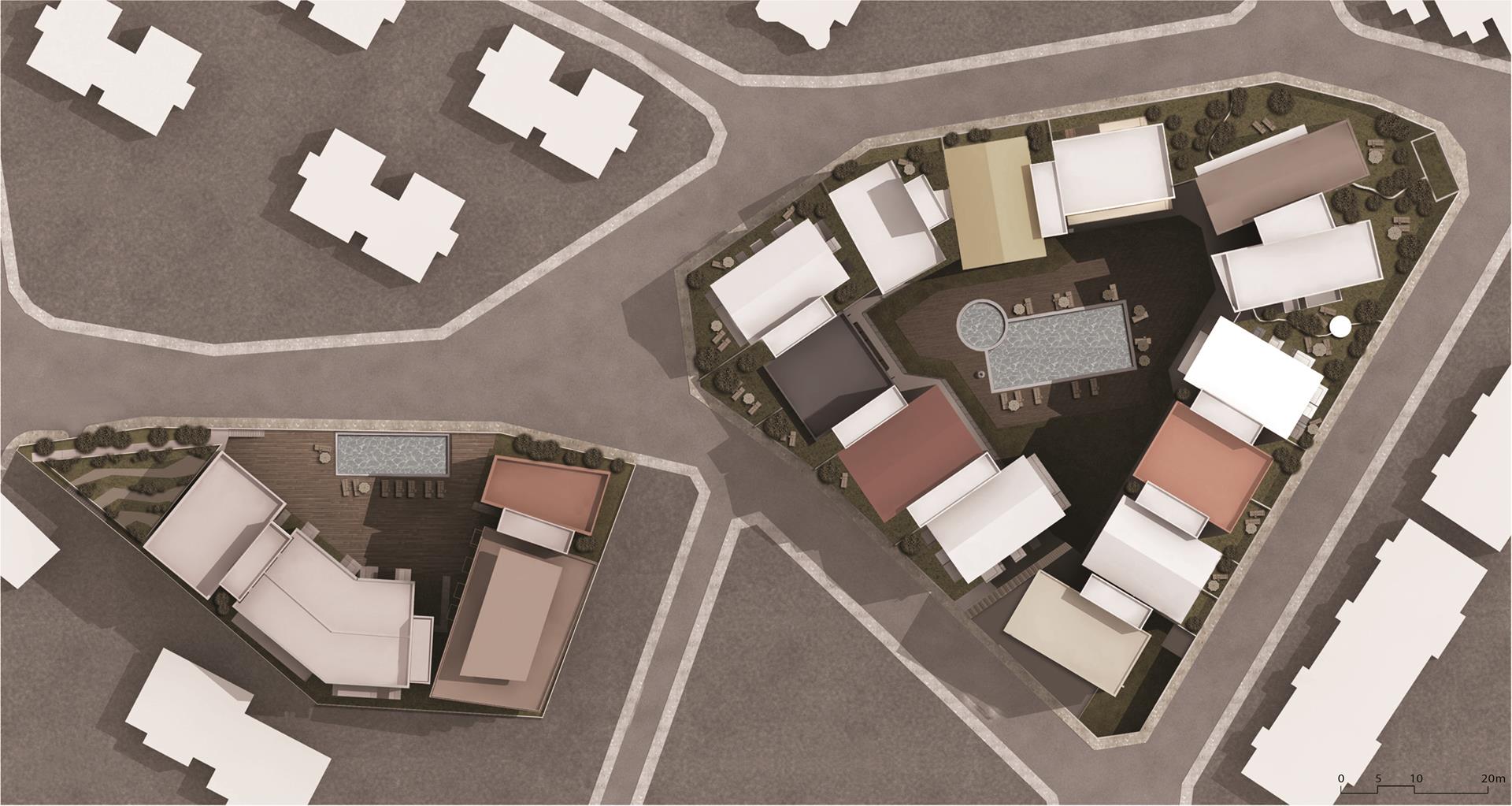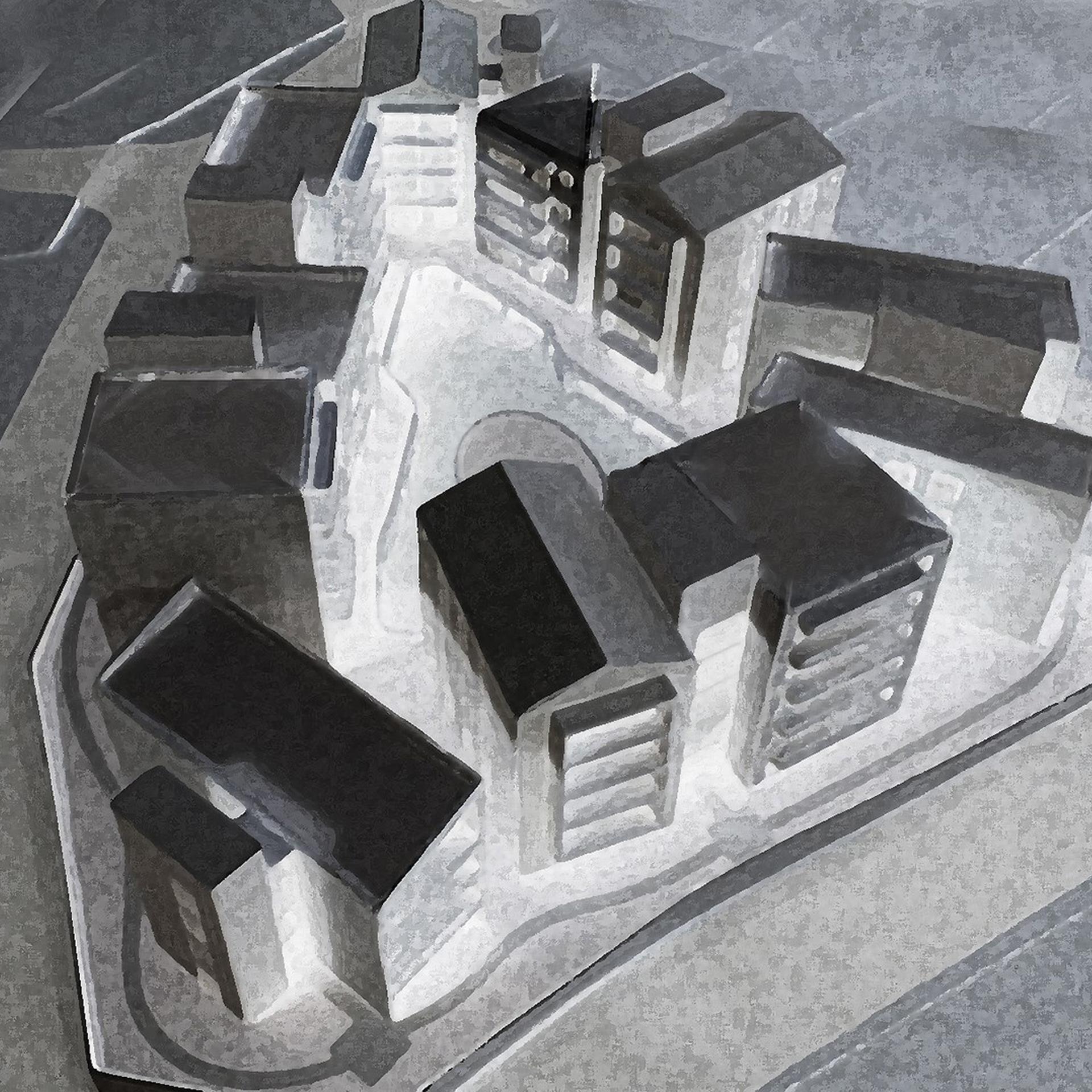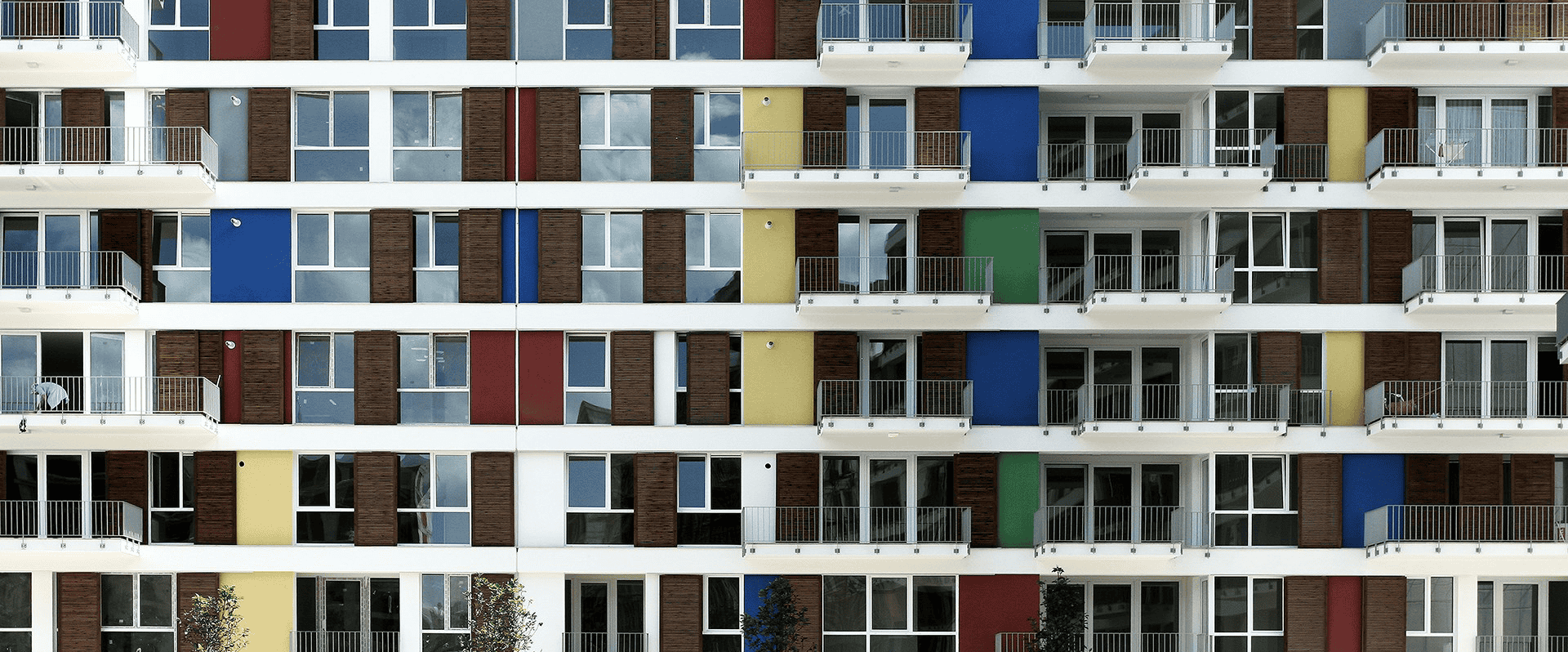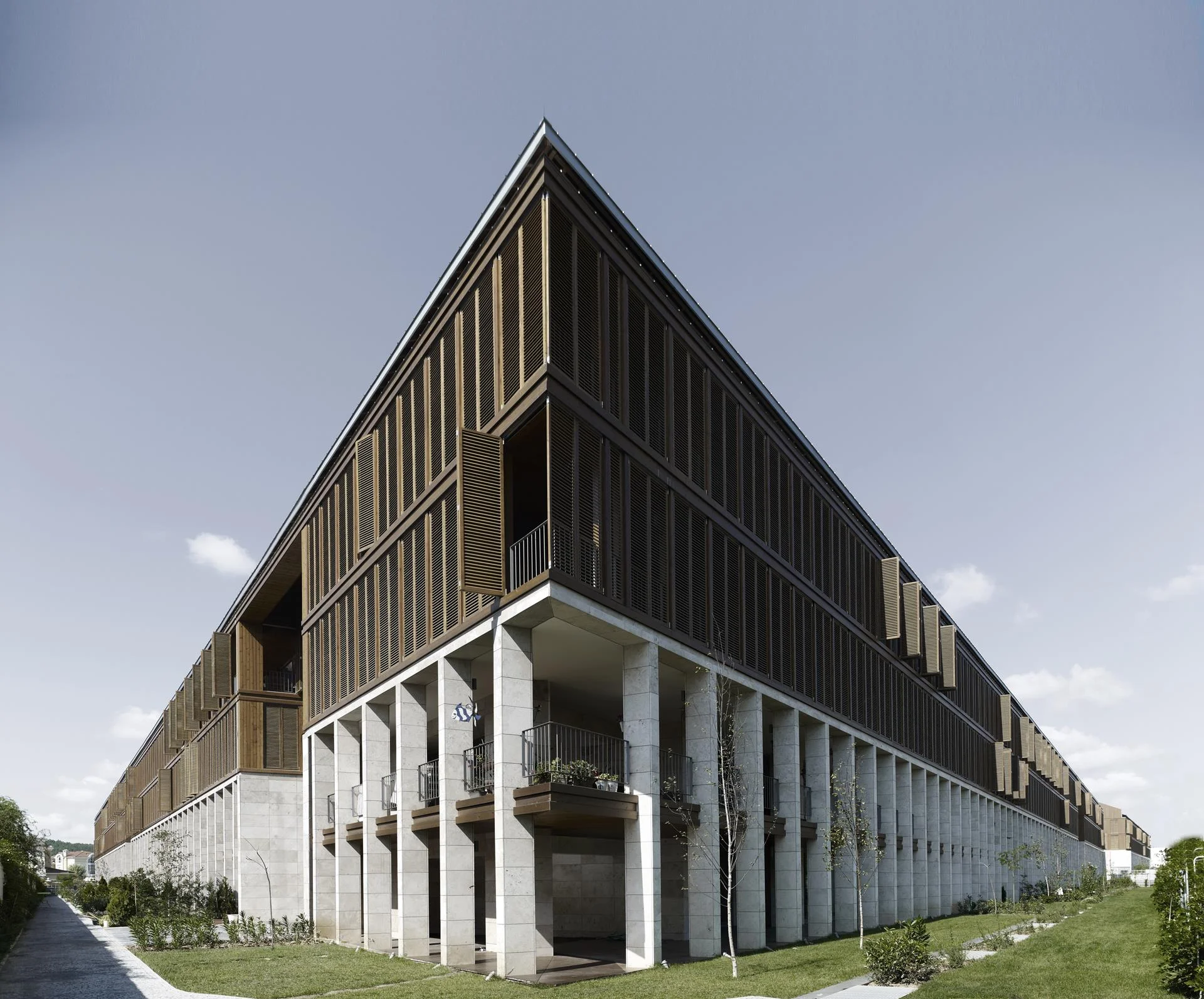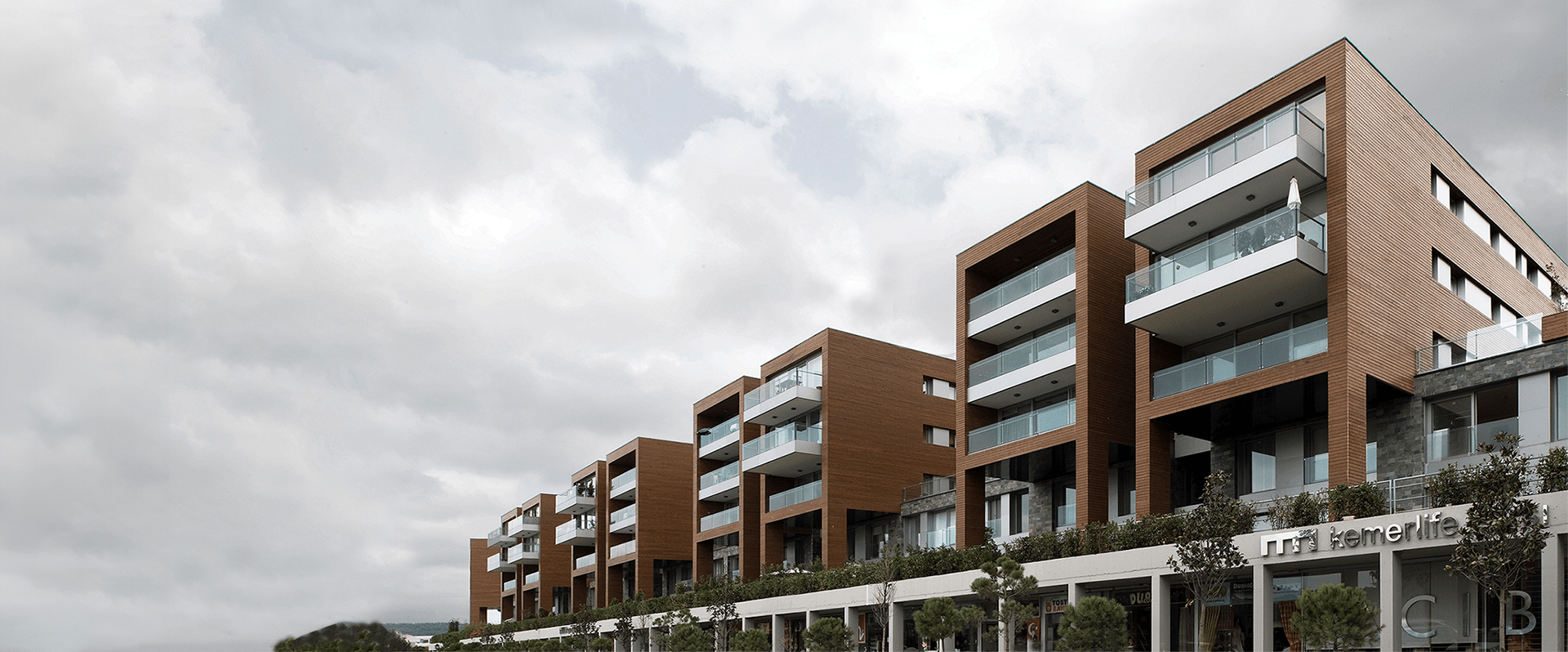The context in which Hibrit Project was settled, loosened all the elements and concepts for this project aimed at establishing a system which we used in settlement projects before, such as grid, repetition, reproduction and module. Masses of different sizes which were designed by articulating each mass within itself, were brought together in a disorderly fashion due to the boundaries of the lot, which are hard to describe. As a means for the effort to bring this plurality closer to reality, each separate building surface was designed by a different architect. These designs, which were chosen at a “charrette” organized at the office, were brought together after minor revisions and adaptations.
For this project the architects used systems that they had previously experimented with, such as the use of a grid, the repetition of structural elements, and a modular approach.
Built between 2006 and 2009, the project deals with a site whose form is complex, which resulted in the use of “masses of different sizes which were designed by articulating each mass within itself, brought together in a disorderly fashion due to the boundaries of the lot.”
The theme of plurality might best describe this residential complex, in which each building surface was selected and designed by a different architect within the office. These designs were chosen at a charrette organized at the office, and they were brought together after minor revisions and adaptations to create the overall appearance of the complex.
The reason for the emphasis on plurality has to do with the surrounding buildings, made up of gated communities, each with a different form of architectural expression. Rather than adding yet another complex with its own architectural language, EAA preferred to inspire themselves with the more normal pattern of a city in which individual buildings come together.



